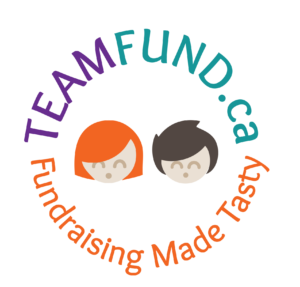Creating a successful fundraiser is a matter of following the map.
So, you’ve decided to hold a fundraiser for your non-profit group, but you want it to reap real rewards. It’s actually easier than you think. Here are some tried and true methods to rock your next fundraising campaign.
Ask Yourself: What are your existing resources?
Whether you are a group of 10 or 10,000, chances are you have a pool of very talented people. Don’t be afraid to ask your group members if they have any special skills. Marketing, social media expertise, public relations, or even a graphic designer to make flyers or posters.
Keep an updated record of who can do what. Even if you don’t need a specific talent today, an opportunity may arise as you progress in your planning!
1. Does your group have an Instagram page or a Facebook profile? Use it to promote your fundraiser!
Use your social media accounts to communicate with group members and potential supporters.
Maybe it’s the players on your sports team or the people who already follow you on Facebook.
Use social media to its fullest and get the word out that you are raising money. In most cases, non-profit groups can have a free profile.
Research has found this step alone can boost sales by as much as 40%. You really have nothing to lose, but the time it takes to create the profile.
If you don’t have a social media presence, starting one as soon as possible is probably a good idea. Not only for fundraising, but also to promote your group!
Knowing where you’re starting from will help you lay out a clear path to where you want to be.
2. Draft your fundraiser budget
Presumably, you’ve considered your fundraising options and decided on the one you’d like to pursue.
It’s time to evaluate the potential costs of holding a fundraiser and the profits you can reasonably expect.
TeamFund can be an invaluable resource when evaluating the cost versus benefits of your sales campaign. If you are creating your own campaign, you may need to do some additional research.
Just like in step one, you’ll want to know how many volunteers you have. If you’re selling products, it goes without saying that the more people you have, the more sales you’ll likely make!
Ultimately you want to know if your efforts get you closer to your goal.
Set realistic targets. If you can’t get half of your players to come to practice, they may not be dedicated sellers.
>> Read our blog on setting goals using the S.M.A.R.T. method if you need help setting goals for your fundraiser.
Make sure everyone knows your goals and why they are important to your non-profit group. If you have strong buy-in, you’ll see that reflected in sales.
3. Set a timeline for each step of your fundraiser
Make sure that you give yourself enough time to plan out your event or campaign. Having plenty of time to accomplish all the tasks on your list will lead to better outcomes.
A disorganized fundraiser can be off-putting to supporters and could ultimately result in lost profits.
Find the right balance between the time you announce your event and when it starts.
The perfect amount will vary based on what form of fundraising you are doing. Large events such as a gala should be announced further in advance than a car wash. Be careful. Too much time and you risk people forgetting about your event entirely.
In our experience, three weeks is usually the perfect length for selling a tangible product.
The first week allows sellers to get going and put the word out.
Week two will generally be a time of steady sales.
The final week is the big push. It allows anyone who got busy to have the chance to support your group still.
You can also create some urgency as the campaign comes to a close. It’s tempting to think more time equals more profit, but this rarely materializes.
In fact, we’ve found it can stall sales throughout the campaign and can sometimes result in few profits.
Short and sweet is the key.
> View the Bacon fundraiser for your next event!
4. Communication is key in your fundraiser
Clear communication is essential at all stages of your fundraiser.
First, tell people about your campaign and why you are raising funds.
The middle of the campaign should be focused on putting your plan into action. Ensure all your sellers are engaged and nobody is having problems with the platform you are using.
You may also be answering questions about your particular group and its goals and the products you’re selling. This is the most critical time to respond promptly to your volunteers and supporters. Whether it’s a question about tickets to your event or selling goods, a slow response often equals a lost sale.
Once the event is over, it can be tempting to sit back and take a much-deserved rest.
However, following up with supporters is critical to closing your campaign on a high note.
Make sure to thank everyone who contributed to the success of your fundraiser. Volunteers and supporters made this possible, so let them know you couldn’t have done it without them.
You will also want to ensure everyone is clear when a product or service is delivered.
Remember that you’ll likely ask these same people to support future endeavours. The last thing you want them to remember is a frustrating experience, so make certain to finish strong.
A successful fundraiser is about being prepared and ensuring everyone knows what to expect. Following a step-by-step plan can lead you to success.
Let us help you reach your next fundraising goal. Download our fundraising package now.
Fundraise for any season and any reason with TeamFund Fundraising!
Follow us on social media to stay up-to-date!






